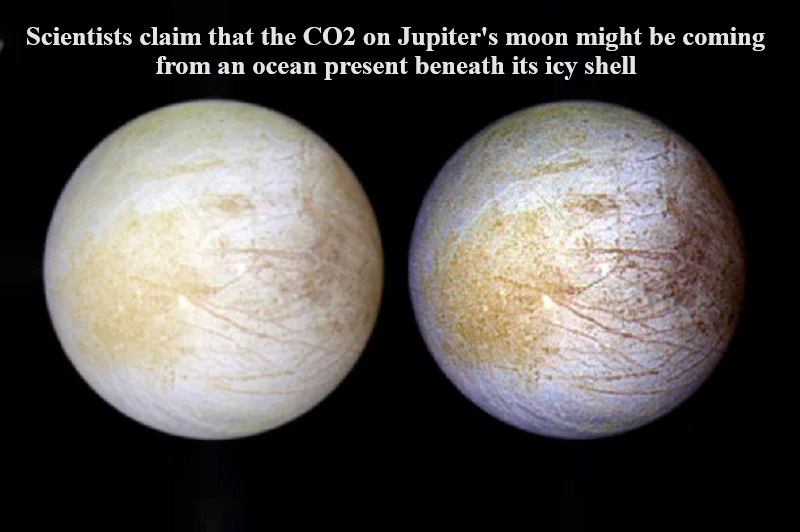
Scientists have made a significant discovery regarding the presence of carbon dioxide (CO2) on Jupiter’s moon Europa, indicating the possibility of suitable conditions for life within our solar system. Using the advanced James Webb Space Telescope, researchers have confirmed the existence of a massive saltwater ocean beneath Europa’s icy surface, positioning the moon as a prime candidate for potential extraterrestrial life.
Two independent research teams reached the same conclusion by utilizing the telescope’s Near-Infrared Camera (NIRCam). The findings, published in the journal Science, pinpointed the area with the highest concentration of life-sustaining CO2.
“The most CO2 was in a 1,800-kilometer-wide (1,120 miles) area called Tara Regio, where there is a lot of ‘chaos terrain’ with jagged ridges and cracks,” the study reported.
While the exact meaning of the “chaos terrain” is not fully understood, one theory suggests that warm water from the subsurface ocean may rise, melting the surface ice, which then refreezes over time, creating uneven cracks.
Lead author Samantha Trumbo explained that both research teams concluded that the carbon likely originated from the interior of Europa, potentially from the internal ocean. Notably, table salt has been detected in Tara Regio, giving the area a distinct yellow hue compared to Europa’s scarred white plains.
With these findings, scientists are gaining insights into the moon’s internal chemistry. The European Space Agency, which launched the Juice mission earlier to explore icy moons for suitable conditions to support life, welcomed the new studies as “very exciting.”
Previously, hypotheses suggested that the presence of CO2 on Europa might have resulted from asteroid or meteorite impacts as the moon orbits Jupiter, the largest planet in our solar system.
For some time, scientists have considered Earth’s moon, Mars, and Europa as potential candidates for environments conducive to human evolution. Despite being slightly smaller than Earth’s moon, Europa’s ocean, estimated to be between 65 and 160 kilometers deep, could contain twice the volume of water found in Earth’s oceans.

Post Your Comments